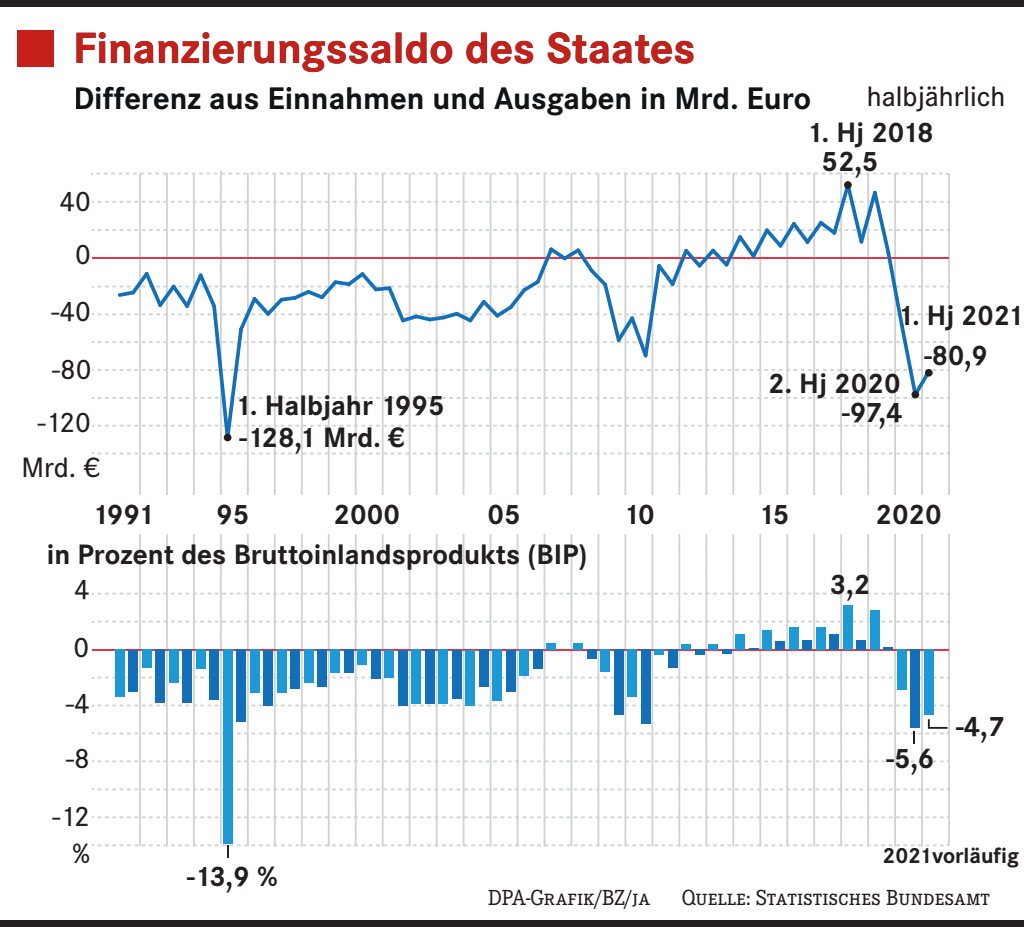In the first half of the year, the federal, state, local and social security agencies took out almost 81 billion euros in new loans – only in 1995 it was even more.
Despite the economic recovery in spring, the German state is deeply in the red in view of billions in spending to cope with the corona pandemic. According to the Federal Statistical Office, the state budget showed the second-highest deficit in the first half of the year since reunification. In the first six months of 2021, the federal government, federal states, municipalities and social security funds spent a total of 80.9 billion euros more than they received. In relation to total economic output, the minus was 4.7 percent.
“There was a higher deficit only in the first half of 1995, when the fiduciary debts were taken over into the state budget,” the Wiesbaden authority explained on Tuesday. Economists assume that income and expenditure will normalize in the course of the expected upswing and that the deficit is likely to shrink in the coming year. Air the economy around, the tax revenue gushes, and the state does not have to support companies with billions. Compared to the second half of 2020, the minus has narrowed. At that time the deficit was 5.6 percent of economic output.
In the spring, the German economy picked up speed again after the slump in the corona lockdown at the beginning of the year (minus 2.0 percent). The gross domestic product rose in the period from April to June by 1.6 percent compared to the previous quarter. In a first estimate, the statisticians assumed an increase of 1.5 percent. According to Federal Economics Minister Peter Altmaier (CDU), the upswing has taken off: “In 2021 and 2022 our economy will grow vigorously.”
Above all, consumer spending (plus 3.2 percent) and government spending (plus 1.8 percent) boosted Europe’s largest economy in the second quarter. The restrictions on the fight against the coronavirus with closures, for example, of parts of the retail trade, fitness studios or cinemas had been gradually relaxed from May. People were less on the edge. The savings rate decreased to 16.3 percent. For every 100 euros of disposable income, households put an average of 16 euros on the high edge. At the beginning of the year it was still 22 euros.
According to economists, consumer spending will continue to drive the German economy in the coming months. The industry, on the other hand, suffers from a shortage of materials and bottlenecks in intermediate products such as semiconductors.
In the corona crisis year 2020, the German state reported a deficit for the first time since 2011, both in the first six months and in the year as a whole. Since the beginning of the pandemic in March 2020, the state has been supporting the economy with economic aid worth billions. However, because of the low interest rate policy and the glut of money from the European Central Bank (ECB), the state can take on historically favorable debt. Despite the increased debt level, interest expenses fell by 10.7 percent in the first half of the year.
–


